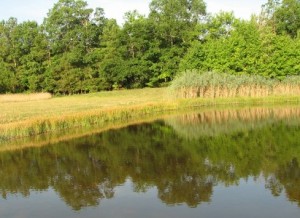 How to attract and sustain wildlife is an important issue for property owners across North America. Areas intended for wildlife range from setting aside a few feet in back yards to procurements of land tracts by conservation groups.
How to attract and sustain wildlife is an important issue for property owners across North America. Areas intended for wildlife range from setting aside a few feet in back yards to procurements of land tracts by conservation groups.
In many areas, providing a reliable source of water is by far the most effective and responsible way to attract wildlife. Small pools or other containers are a good solution for back yards and other limited spaces.
For larger properties, a self sustaining pond may be an option. Wildlife ponds can help sustain deer herds, waterfowl, songbirds, upland birds, fish, reptiles, amphibians and a host of other inhabitants. In rare cases, a stream or creek may be present naturally and can be maintained in order to provide a source of water for wildlife.
Trees and shrubs can be valuable for attracting wildlife. In addition to providing shelter, trees and bushes usually produce flowers, seeds, nuts, berries or fruits which provide forage for wildlife. In some cases, entire food chains can develop from a single tree or grove of plants.
Grasses, legumes, wildflowers and other meadow plants usually attract wildlife. Just as with trees and shrubs, these plants often attract insects and small animals, which in turn act as a food source for birds, mammals, reptiles and other predators.
Food plots are another option that tends to help attract wildlife. Food plots often include grains or seed-producing plants such as sunflowers. These areas can be important stops for birds, deer, rabbits, raccoons and other wildlife.
When larger tracts are involved, several important programs exist in North America. In the USA, a variety of national, state and local programs exist which can help create habitat for wildlife. In some cases, grants or easements are available which focus on limiting agricultural runoff, erosion, or habitat loss. Other grants are available to preserve, create or improve wetlands or other specialized habitats.
Efforts to provide habitat for wildlife are not limited to private landowners. Some of the most well known and respected wildlife habitat stewards are organizations. These range from small and mid-sized local clubs to international organizations whose main function is to help provide habitats for native species of plants and animals.